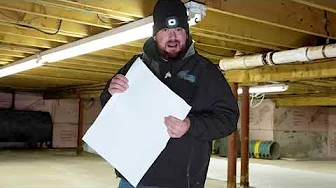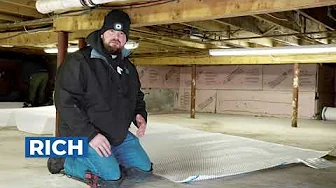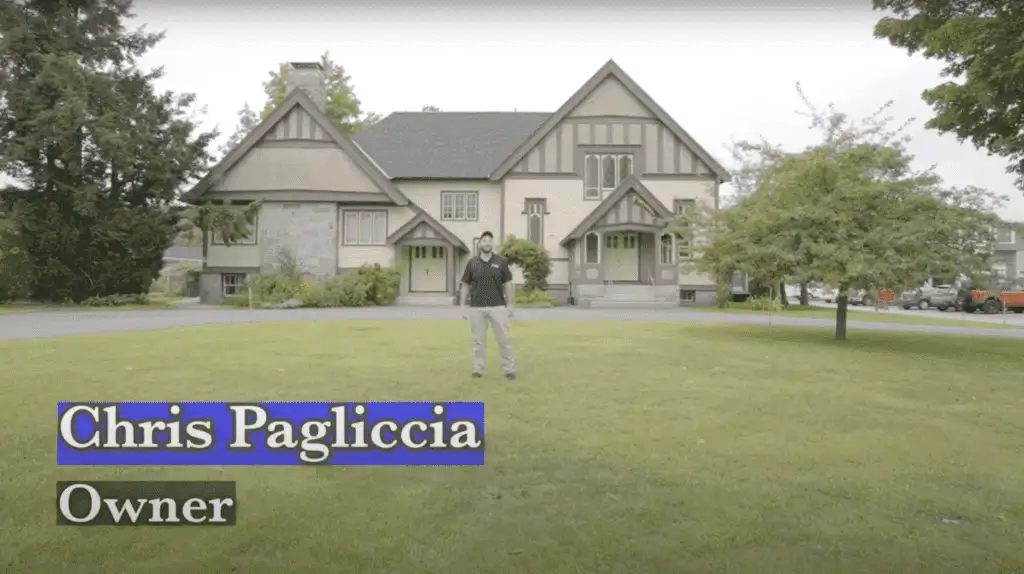Foundation Crack Repair Wells ME
Foundation cracks are a common issue many homeowners face. They can occur for various reasons, including soil movement, water damage, or natural settling. Left untreated, these cracks can lead to structural issues, water intrusion, and even decreased property value. Addressing foundation cracks promptly is essential to maintaining your home’s integrity.
Real People - Real Great Results
Crawl Space Video Playlist
Signs Your Foundation Needs Repairs
Foundation problems rarely announce themselves with fanfare. More often, they’re subtle, creeping issues that whisper through the creaks of a sticking door or the slow tilt of an uneven floor. Learning to spot these signs early can make a crucial difference between a manageable repair and an expensive nightmare. Here’s what to look for:
- Visible Cracks: All cracks are not created equal. A hairline split might just be your home settling into place, but larger horizontal or stair-step cracks in concrete or brickwork? That’s a flag flapping in the breeze. If they’re widening over time, it’s not just your imagination—it’s your foundation begging for attention.
- Sticking Doors and Windows: Doors and windows that once opened with a simple push now require a Herculean effort just to budge. This isn’t a problem with your door frame swelling on a humid day; it’s often a quiet reminder that your foundation is shifting, dragging everything above it along for the ride.
- Uneven Floors: You might think the slope in your living room gives it character, but let’s call it what it is—a problem. Whether your floors are tilting, sagging, or feel springy, these quirks often trace back to deeper foundation issues. Pro tip: if marbles start rolling on their own, it’s time to investigate.
- Water Intrusion: Maybe you notice damp spots in the basement corner. Maybe it’s a full-on puddle party after every rainstorm. Either way, water has found its way in through foundation cracks, weakening the structure and inviting a host of other troubles—mold, mildew, and even unwelcome critters. Better to address it now than be forced to swim later.
In short, your foundation doesn’t fail silently. Pay attention to these clues, because your house is trying to tell you something: fix this before it gets worse.
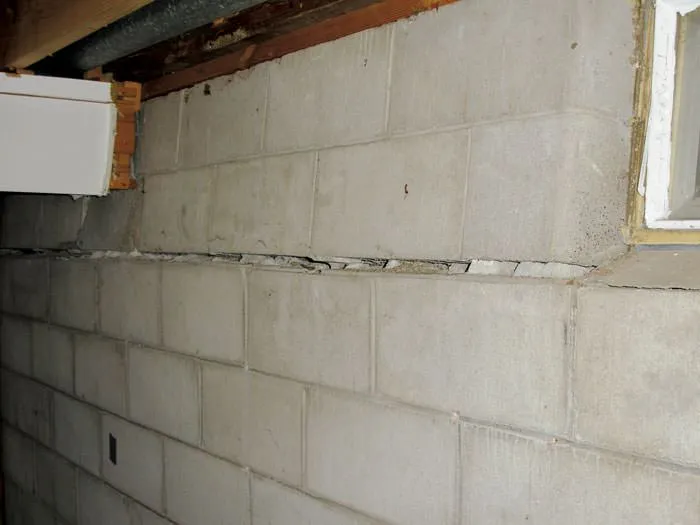
Causes of Foundation Cracks
Foundation cracks don’t just appear out of nowhere—they’re often the result of forces acting on your home over time. Knowing what’s behind the cracks can give you a clearer idea of how to prevent them down the road. Here are the most common culprits:
- Soil Movement: Your foundation sits on soil, and not all soil plays nice. Expansive soils, like clay, are notorious troublemakers. When they soak up water, they expand, pushing against your foundation. When they dry out, they shrink, leaving gaps that can cause your foundation to settle unevenly. This constant back-and-forth puts stress on your home’s base, leading to cracks.
- Hydrostatic Pressure: Water is another big player in the foundation-crack game. When the soil around your house saturates with water—say, after a heavy rain—the weight of all that water creates pressure. This hydrostatic pressure pushes against your foundation walls. Over time, it can cause those walls to buckle or crack. Without proper drainage, you’re practically inviting trouble.
- Natural Settling: No foundation is immune to settling—it’s part of a home’s natural lifecycle. As your house “settles in” over the years, minor cracks may form simply from gravity doing its thing. Though many of these cracks are harmless, they can widen or worsen if the settling isn’t uniform (say, because of uneven soil beneath the house).
- Weather Changes: If you live in a place with freeze-thaw cycles, like Wells ME, your foundation goes through a seasonal wrestling match. When water seeps into small cracks in the concrete and freezes, it expands, forcing the cracks wider. Then, when it thaws, it leaves behind a little more room for moisture to sneak in next time. Rinse and repeat, and you’ve got a recipe for recurring cracks.
Understanding these causes is step one. It’s not about fixing what’s already broken—it’s about stopping the problem at its source.
Types of Foundation Cracks
Not all cracks are created equal, and understanding the type of crack you’ve noticed is crucial for diagnosing the underlying problem. Let’s break it down:
- Hairline Cracks: These are the least threatening and are often a byproduct of concrete curing or minor settling after construction. Hairline cracks are typically thin and shallow, more cosmetic than structural. While they don’t usually demand urgent attention, sealing them can prevent moisture from creeping in and causing bigger issues later.
- Vertical Cracks: A standard player in the foundation game, vertical cracks often arise from natural settling. The good news? They’re typically not a sign of major structural distress and are relatively easy to repair with methods like crack injection. If water intrusion isn’t a factor, these cracks can sit on the “watchlist,” but don’t ignore them indefinitely.
- Horizontal Cracks: These are the “red flags” of the bunch. Horizontal cracks usually point to excessive pressure from outside forces—think hydrostatic pressure from waterlogged soil or even frost heave in colder climates. Left unaddressed, horizontal cracks can compromise the structural integrity of your foundation and lead to costly repairs. If you spot one, call in the cavalry (a professional) sooner rather than later.
- Stair-Step Cracks: Common in brick or block foundations, stair-step cracks take a zigzag path along mortar joints. They’re typically caused by uneven settling or issues with drainage and soil movement. The severity can range from mild inconvenience to structural concern, depending on the width and progression of the crack. A good rule of thumb? If you can slide a coin into the crack, it’s time to bring in a specialist.
Knowing these crack types isn’t just about identifying damage—it’s about understanding the story your foundation is trying to tell. Pay attention, and you’ll save yourself both headaches and hefty repair bills down the line.
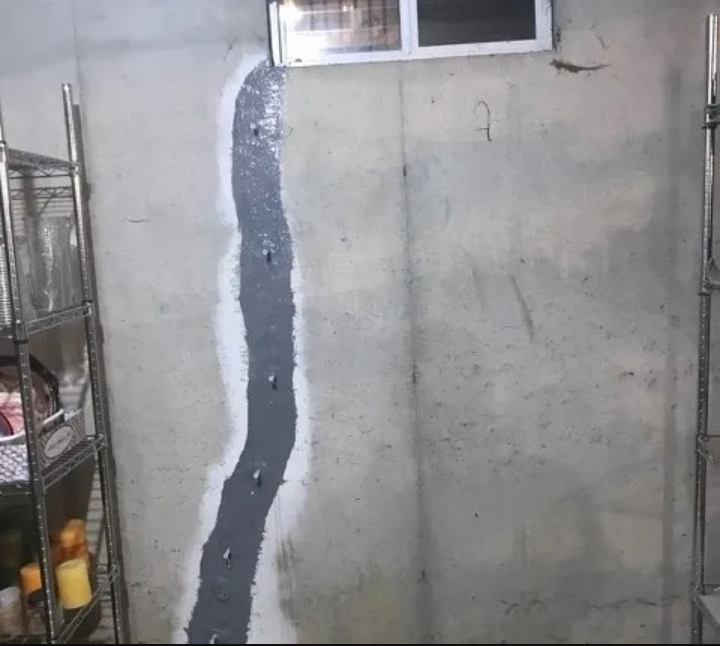
Why Address Foundation Cracks Immediately?
It’s tempting to ignore a small crack in your foundation, especially if it doesn’t seem to be causing any immediate problems. But here’s the truth: cracks don’t fix themselves, and what starts as a minor issue can quickly snowball into a financial and structural headache. Foundation problems are like leaks in a boat—wait too long, and you’ll find yourself sinking faster than you realize.
- Increased Damage: Cracks have a way of growing—what starts as a hairline fissure can evolve into something wider, deeper, and far more dangerous. As the crack widens, the structural integrity of your home weakens. The longer you wait, the more extensive (and expensive) the repair job becomes. Think of it like skipping oil changes for your car; ignoring the issue now only guarantees a bigger problem later.
- Water Damage: Cracks are an open invitation for water to seep into your home. Moisture doesn’t just worsen the crack; it invites mold, mildew, and rot to the party. A damp basement isn’t just unpleasant—it’s a sign that your home’s backbone is under attack. Plus, once water infiltrates, you’re likely looking at costly additional repairs, from waterproofing to replacing damaged materials.
- Pest Intrusion: Foundation cracks are an expressway for pests. Termites, ants, rodents—name your least favorite creepy-crawly, and cracks will roll out the welcome mat. These unwelcome guests can chew through wood, wiring, and insulation, compounding your problems. Cracks are bad enough; adding pests into the mix is like pouring salt on the wound.
- Decreased Home Value: A solid foundation is more than just peace of mind—it’s currency. When the time comes to sell your home, foundation issues can scare off buyers faster than a bad inspection report. Even if you’re not planning to sell any time soon, why gamble with your biggest investment? A proactive repair now saves you the trouble of explaining (and discounting) later.
The bottom line? Foundation cracks aren’t a “maybe later” problem—they’re a “fix me now.” The cost, risks, and complications only increase with time. Do yourself a favor: tackle the issue head-on, and keep your home standing strong for years to come.
Solutions for Foundation Crack Repair in Wells ME
Foundation repairs aren’t one-size-fits-all. The approach depends on the specific problem, but the goal remains the same: stabilize and fortify your home. Here’s a breakdown of the most effective solutions:
- Epoxy or Polyurethane Injection: For narrow, non-structural cracks, this is the go-to method. Think of it like sealing up a wound—these materials penetrate the crack and harden, creating a watertight bond that stops moisture dead in its tracks. It’s perfect for cosmetic fixes or situations where water seepage is the real enemy. Quick, clean, and no heavy equipment needed—this method is as straightforward as they come.
- Carbon Fiber Reinforcement: For horizontal or stair-step cracks, you’re dealing with stress points that demand reinforcement. Carbon fiber straps are applied directly to the wall, essentially acting like a high-strength Band-Aid to keep everything in place. Once installed, they stabilize the wall and prevent further movement, all without taking up any space or requiring invasive measures. Strong, sleek, and practical.
- Foundation Piering: If your home is sinking—a.k.a. significant settling—this is the cavalry. Steel piers are driven deep into stable soil or bedrock to provide a solid anchor. The foundation can then be lifted back to its original position. It’s not a quick fix, but for serious structural issues, it’s the closest thing to a reset button.
- Slab Jacking: Uneven floors making you feel like you’re in a funhouse? Slab jacking involves injecting a grout-like mix underneath a concrete slab, leveling the surface by filling any voids. It’s less disruptive than you think and perfect for correcting localized settling without tearing everything apart.
- Waterproofing: If water’s the culprit, solving the root cause is non-negotiable. Exterior drainage systems, sump pumps, and sealants can all play a role in keeping your foundation dry. Waterproofing doesn’t just stop leaks—it gives your foundation the buffer it needs to handle whatever Maine weather throws at it.
The solution you choose will depend on the nature and scope of your foundation issues. The key is tackling the problem head-on. The longer you wait, the harder the fix—and the heavier the bill. Wells ME homeowners, don’t let a small crack grow into a giant headache.
Preventing Future Foundation Cracks
Foundation maintenance isn’t flashy, but it’s far easier—and cheaper—to prevent cracks than to fix them down the line. A little foresight goes a long way. Here’s what to keep in mind:
- Maintain Proper Drainage: Water is your foundation’s worst enemy. If you don’t already have gutters and downspouts, get them. If you do, check that they’re actually doing their job—directing water at least five feet away from your home. A sudden downpour shouldn’t leave your foundation swimming.
- Control Moisture Levels: Extreme swings in soil moisture—soggy one season, bone dry the next—can wreak havoc on foundation stability. If you’re overwatering your flower beds or neglecting to water during a dry spell, adjust your habits. Keep the soil consistently damp but not saturated.
- Monitor Landscaping: Those beautiful shrubs next to your house? They may not be as harmless as they look. Roots can grow toward your foundation, squeezing and stressing the concrete over time. Make sure trees and large plants are planted far enough away to avoid interference.
- Inspect Regularly: Walk your perimeter once a season. Look for new cracks, signs of shifting, or pooling water. Catching a potential problem early can turn what might be a major headache into a quick, manageable fix.
It’s not glamorous work—no one’s bragging about their stellar downspouts at the next barbecue—but these simple steps can save you a lot of money, stress, and repairs. Prevention beats repair every time.
When To Call a Professional
Some problems are too big, too complicated, or too risky to handle on your own. While you might be tempted to patch up small cracks with a hardware-store kit, knowing when to call in the pros can save you from spiraling costs and bigger headaches down the line. Here’s the litmus test: if the crack is wider than a standard pencil tip—think anything larger than 1/8 inch—it’s time to pick up the phone. This is especially true for horizontal or stair-step cracks, which often signal serious structural pressure that DIY solutions simply can’t handle.
Water intrusion is another red flag. Not a little dampness, but actual puddles, trickles, or consistent wet spots in your basement. These aren’t just annoying; they could mean the crack is actively compromising your foundation’s integrity. Mold, mildew, and structural rot love moisture, and ignoring the issue invites them to stay.
Then there are the other telltale signs: doors and windows that don’t open or close smoothly, cracks that seem to widen week by week, or floors that sag or slope more noticeably than a teenager’s messy bedroom floor. These are clear signals that something structural beneath your house is shifting, and you’re not going to fix it with a bit of sealant and good intentions.
Professionals bring in more than experience—they bring the heavy-duty diagnostic tools, like lasers for leveling and pressure tests, to find what’s really going on. More importantly, they know the difference between a quick fix that holds for years and a bandage that just delays the real problem. For anything more than a superficial cosmetic crack, don’t think twice—call in the experts. It could mean the difference between a $500 repair and a $50,000 nightmare.

Conclusion
Foundation crack repair in Wells ME isn’t just about fixing a problem—it’s about safeguarding your home’s future. Ignoring those hairline fractures or waiting until a sticking door turns into a sinking floor is a gamble that’s almost never worth taking. Repairs might feel like an inconvenience today, but they’re a smart tradeoff compared to the cost of escalating damage or a hit to your home’s resale value.
Whether it’s a quick epoxy fill or a full-scale piering operation, addressing cracks early leads to fewer headaches and a more secure living space. Your foundation literally holds everything up—treating it with care isn’t just maintenance, it’s peace of mind. The earlier you take action, the fewer sleepless nights you’ll have later. Simple as that.
Reviews from Happy Customers
Our top priority is customer satisfaction, and we work closely with clients to understand their unique needs and goals.




